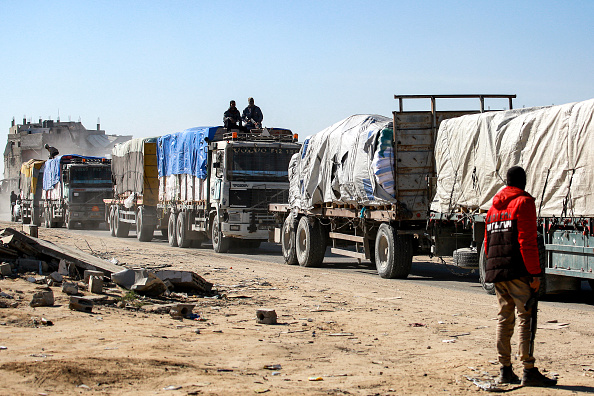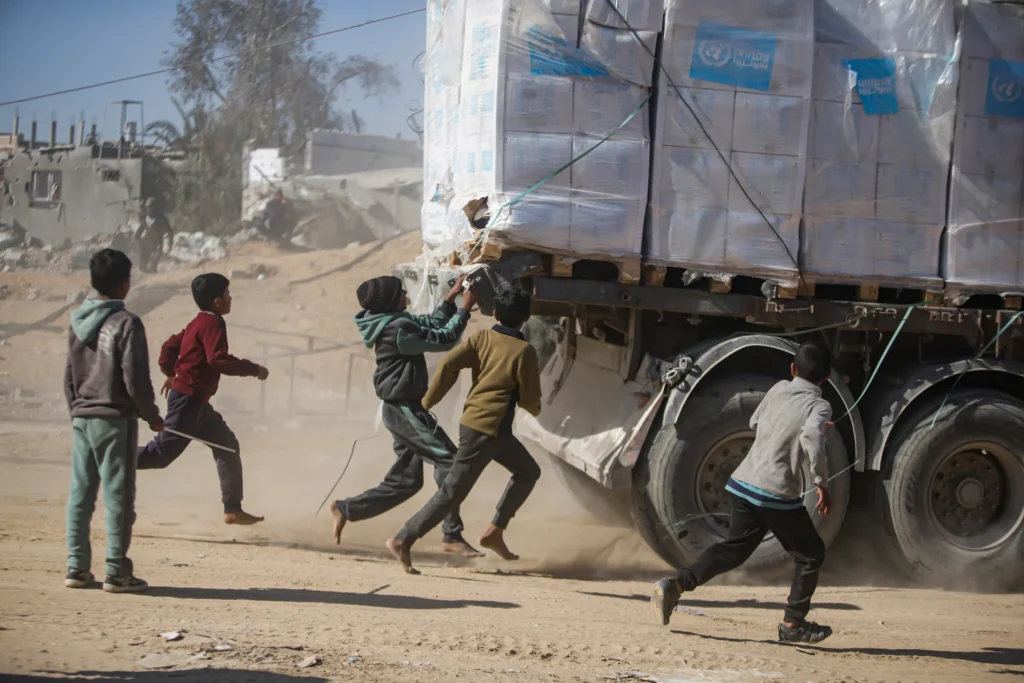Nearly 900 humanitarian aid trucks entered Gaza on Tuesday, marking the third day of a ceasefire between Israel and Hamas militants, according to the United Nations. A senior U.N. official reported no major law-and-order issues during the aid distribution process.

The influx of aid brings the total to more than 2,400 trucks entering the Gaza Strip over three days, delivering critical supplies amid the ongoing humanitarian crisis.
Throughout the 15-month conflict, the U.N. has described its relief efforts in Gaza as facing significant challenges, including Israeli military operations, access restrictions, and, more recently, looting by armed groups.
Muhannad Hadi, the U.N.’s top aid official for Gaza and the West Bank, noted minor incidents of looting in the past three days but said they were not as severe as earlier cases.
“It’s not organized crime. Kids jumped on some trucks trying to take food baskets. There were some other people who tried to take bottled water,” Hadi told reporters after visiting Gaza. “Hopefully, within a few days, this will all disappear once the people of Gaza realize we will have enough aid for everybody.”

The U.N. Office for the Coordination of Humanitarian Affairs (OCHA) said 897 aid trucks entered Gaza on Tuesday, based on information from Israel and the ceasefire guarantors—the United States, Egypt, and Qatar. This compares to 630 trucks on Sunday and 915 on Monday.
The ceasefire agreement stipulates that a minimum of 600 truckloads of aid, including 50 carrying fuel, must be allowed into Gaza daily during the initial six-week truce. Half of the trucks are designated for northern Gaza, where experts have warned famine is imminent.
Hadi cautioned that challenges remain despite the ceasefire. “Let’s not assume that because there is a ceasefire, life is going to be rosy, and our work will be a walk in the park,” he said.
He pointed to logistical difficulties caused by the destruction of Gaza’s road network and restrictions on movement within the enclave.
OCHA outlined humanitarian priorities in Gaza, including food distribution, reopening bakeries, restoring healthcare services, resupplying hospitals, repairing water infrastructure, providing materials for shelter repairs, and reuniting families.


